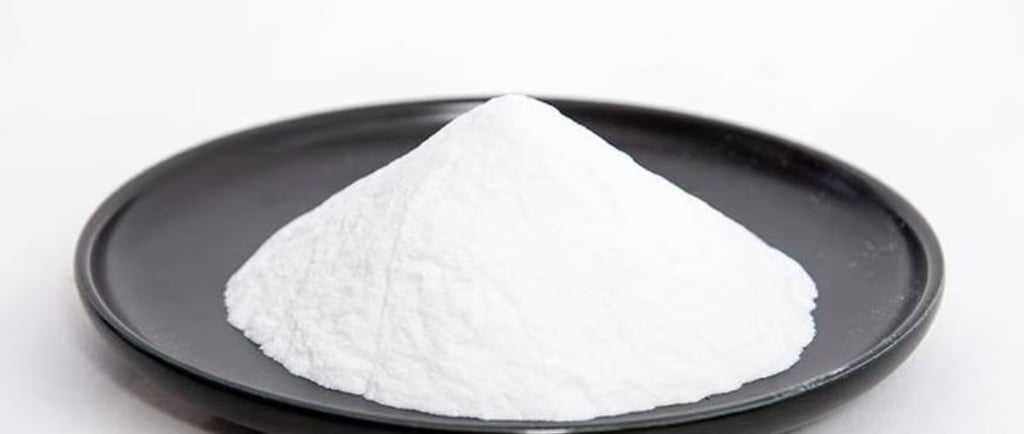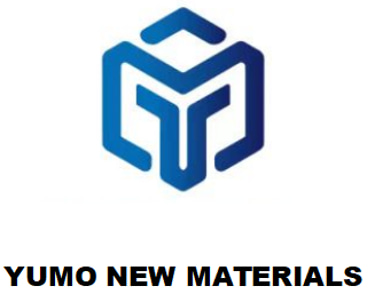HENAN YUMO: Engineered Precision, Uncompromised Performance
Stop Polishing Scratches! F2000 Silane-Alumina Delivers Mirror Finish in 2 Steps
Polishing fine surfaces—whether in optics, electronics, or advanced ceramics—is both an art and a science. Yet even with precision tools, skilled operators, and high-end equipment, one frustrating problem remains: scratches that refuse to disappear.
7/28/20254 min read


Polishing fine surfaces—whether in optics, electronics, or advanced ceramics—is both an art and a science. Yet even with precision tools, skilled operators, and high-end equipment, one frustrating problem remains: scratches that refuse to disappear.
No matter how many polishing steps you run, they seem to reappear under the microscope. The problem isn't just time-consuming—it threatens product quality, increases rework costs, and limits scalability in high-end manufacturing.
But what if you could skip the endless polishing and achieve a true mirror finish in just two steps? That’s exactly what F2000 silane-treated white fused alumina from Henan Yumo New Materials makes possible.
In this article, we’ll dive into:
The science behind polishing-induced scratches
Why standard alumina polishing powders fail in critical finishing
How silane-treated F2000 alumina works on a molecular level
The two-step polishing method that eliminates scratches
Application cases in glass, ceramics, semiconductors, and metal optics
Why Yumo’s silane-modified white alumina is the go-to choice for scratch-free mirror finishes
Let’s uncover how to stop polishing scratches—for good.
Chapter 1: Why Scratches Persist Despite Multiple Polishing Steps
1.1 Mechanical Abrasion at the Micron Scale
Scratches during polishing occur when abrasive particles embed or plow through the surface unevenly. While submicron abrasives are designed to refine surface quality, they can behave unpredictably based on:
Particle size distribution
Agglomeration
Chemical surface activity
Load distribution and slurry flow behavior
1.2 Standard Alumina: High Hardness, But Not Always Friendly
White fused alumina (WFA) is commonly used for precision polishing due to its high hardness (~9 on the Mohs scale) and purity. However, untreated alumina particles tend to have:
Irregular shapes with sharp edges
Weak dispersion in certain polishing slurries
Poor compatibility with organic or aqueous vehicles
Agglomeration under mechanical stress
The result? Micro-scratches caused by uneven particle action, especially during the final polishing steps where uniformity is critical.
Chapter 2: What Is F2000 Silane-Treated White Alumina?
2.1 The F2000 Grade – Precision in Particle Size
“F2000” refers to an ultra-fine white fused alumina powder with a mean particle size of ~1µm and tight size distribution. Manufactured via precision crushing, air classification, and purification, it’s ideal for superfinishing and lapping applications.
Yumo’s F2000 powder is available in both standard and surface-treated forms, with the silane-modified version offering unique performance benefits.
2.2 Silane Treatment – The Secret Ingredient
Silane coupling agents are organosilicon compounds that bond inorganic materials (like alumina) to organic matrices. When applied to F2000 alumina:
The silane forms a chemical bridge between the particle surface and the slurry liquid (whether water- or oil-based)
This dramatically improves dispersibility, chemical affinity, and flow uniformity
The particles gain a slightly smoother morphology, reducing the chance of surface gouging
The result is a polishing material that behaves intelligently within the slurry—suspending evenly, cutting consistently, and removing material cleanly without leaving scratches.
Chapter 3: The 2-Step Mirror Finish Process with F2000 Silane-Alumina
Forget multi-step regimes with five or more polishing grades. With F2000 silane-treated alumina, manufacturers in precision fields have reported mirror-like finishes in only two steps:
Step 1: Pre-Polishing with F1000/F1200 Alumina
Removes primary marks from grinding or lapping
Prepares a flat, uniform surface without creating new deep scratches
Carried out with a hard polishing pad and moderate pressure
Step 2: Final Polishing with F2000 Silane-Alumina
Delivers nanoscale removal for surface refinement
Excellent dispersion avoids agglomerates that scratch
Produces a reflectivity over 95% (on glass/ceramics), Ra < 10 nm (depending on material)
Suitable for soft and hard substrates alike
Customers have reported that even optical-grade finishes were achievable with this 2-step process on:
Quartz and borosilicate glass
Zirconia and alumina ceramics
Sapphire wafers
Stainless steel and aluminum mirrors
Nickel-coated molds
Chapter 4: Application Fields and Performance Benefits
4.1 Optics and Photonics
In lenses, prisms, laser windows, and IR filters, surface quality directly affects transmission and scattering. With F2000 silane-treated alumina:
Achieve perfect transmission with zero micro-defects
Avoid edge chipping or surface roughness from uneven polishing
Minimize heat build-up during final finishing
4.2 Semiconductor and Wafer Polishing
For silicon carbide, gallium nitride (GaN), or sapphire wafers:
Achieve sub-nanometer flatness
Maintain low TTV (total thickness variation)
Avoid particle entrapment that leads to downstream defects
4.3 Advanced Ceramics and Technical Components
Yumo’s F2000 is ideal for polishing:
Medical implants (e.g., zirconia crowns)
Precision bearings
Ceramic seal rings
Aerospace-grade components
Because the particles are silane-treated, they minimize surface contamination and post-polish cleaning effort.
4.4 Metal and Tooling Surfaces
In molds and high-reflectivity components:
Achieve flawless mirror polish with fewer steps
Improve mold release in injection systems
Extend service life due to smoother surfaces
Chapter 5: Why Choose Henan Yumo’s Silane-Modified Alumina?
5.1 Controlled Manufacturing for Consistency
Yumo operates a modern facility with:
Advanced melting and crushing systems
On-site particle classification and air separation
Surface modification labs for silane and surfactant treatments
Strict quality control per ISO 9001 standards
5.2 Custom Silane Formulations
Different silane groups can be used based on the slurry type:
Amino silane for water-based slurries
Methacrylate silane for resin systems
Fluorosilane for hydrophobic environments
Yumo works directly with customers to match their processing conditions with the correct treatment.
5.3 Global Supply and Proven Performance
With exports to Japan, Korea, the USA, and Europe, Yumo’s F2000 silane-treated alumina is already used by:
Optical component manufacturers
LED substrate processors
Ceramic tooling makers
Precision polishing service providers
Chapter 6: FAQs About F2000 Silane-Alumina
Q1: Is silane-alumina compatible with my existing polishing slurry?
Yes. Yumo offers customized silane treatments to match your slurry chemistry. Whether it’s aqueous, alcohol-based, or resin-bonded, there’s a compatible grade.
Q2: Can it be used in automated CMP or manual polishing?
Both. Its high dispersion and low clogging make it suitable for continuous use in automated systems and precision manual setups.
Q3: What’s the shelf life and storage requirement?
With proper sealed packaging, shelf life is over 12 months. Store in a dry, cool environment and avoid exposure to humidity.
Conclusion: Polish Smarter, Not Harder
If your team is tired of chasing scratches in final polishing—stop. The answer isn’t more steps or more aggressive pads. It’s smarter abrasives.
F2000 silane-treated alumina from Henan Yumo New Materials offers:
Superior dispersion
Controlled cutting action
Mirror finishes in just two steps
Compatibility with multiple substrates
Don’t let substandard abrasives hold back your precision. Choose the polishing solution engineered for the next generation of surface perfection.
